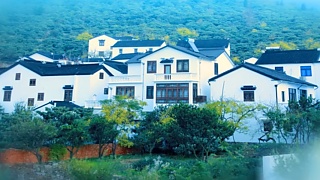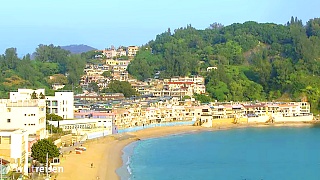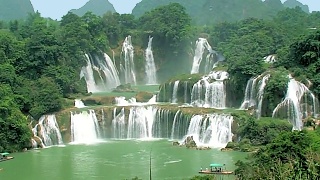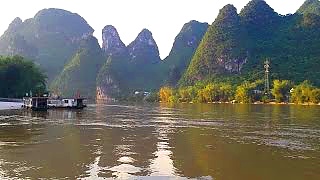
|
ShenZhen: 20 Kid-Friendly Places to Visit
Window of the World (世界之窗 Shìjiè Zhī Chuāng): Theme park with replicas of famous landmarks from around the world.
Happy Valley (欢乐谷 Huānlègǔ): Amusement park with rides, shows, and attractions for all ages.
Shenzhen Safari Park (深圳野生动物园 Shēnzhèn Yěshēng Dòngwùyuán): Safari park with a variety of animals, shows, and interactive experiences.
Sea World (海上世界 Hǎishàng Shìjiè): Waterfront area with restaurants, shops, and entertainment venues.
Shenzhen Children's Palace (深圳市少年宫 Shēnzhèn Shì Shàonián Gōng): Cultural center offering classes, workshops, and performances for children.
Fairy Lake Botanical Garden (仙湖植物园 Xiān Hú Zhíwùyuán): Botanical garden with plant collections, walking trails, and scenic landscapes.
Shenzhen Splendid China Folk Village (深圳锦绣中华民俗村 Shēnzhèn Jǐnxiù Zhōnghuá Mínsú Cūn): Theme park with exhibits on Chinese culture, history, and traditions.
Shenzhen Mangrove Nature Reserve (深圳红树林自然保护区 Shēnzhèn Hóngshùlín Zìrán Bǎohù Qū): Nature reserve with mangrove forests, boardwalks, and birdwatching.
Dameisha Beach (大梅沙海滨公园 Dà Méishā Hǎibīn Gōngyuán): Beach park with sandy shores, water sports, and seaside attractions.
Xiaomeisha Beach (小梅沙海滨公园 Xiǎo Méishā Hǎibīn Gōngyuán): Beach park with swimming areas, water slides, and recreational facilities.
Shenzhen Lianhuashan Park (深圳莲花山公园 Shēnzhèn Liánhuā Shān Gōngyuán): Park with gardens, temples, and scenic views of the city.
Shenzhen Children's Library (深圳市少年儿童图书馆 Shēnzhèn Shì Shàonián Értóng Túshūguǎn): Library with children's books, storytelling sessions, and educational activities.
Shenzhen Science Museum (深圳科技馆 Shēnzhèn Kējìguǎn): Museum with interactive exhibits, experiments, and demonstrations on science and technology.
Shenzhen Happy Harbor (深圳欢乐港湾 Shēnzhèn Huānlè Gǎngwān): Waterfront area with shops, restaurants, and entertainment options for families.
Shenzhen Museum (深圳博物馆 Shēnzhèn Bówùguǎn): Museum with exhibits on Shenzhen's history, culture, and development.
Shenzhen International Garden and Flower Expo Park (深圳国际园林花卉博览园 Shēnzhèn Guójì Yuánlín Huāhuì Bólǎn Yuán): Park with botanical gardens, flower displays, and cultural events.
Shenzhen Poly Theatre (深圳保利剧院 Shēnzhèn Bǎolì Jùyuàn): Performing arts venue with theater productions, concerts, and shows suitable for families.
Shenzhen OCT Harbour (深圳华侨城欢乐港湾 Shēnzhèn Huáqiáochéng Huānlè Gǎngwān): Waterfront area with shopping, dining, and entertainment options overlooking the bay.
Shenzhen Guanlan Printmaking Base (深圳观澜版画基地 Shēnzhèn Guānlán Bǎnhuà Jīdì): Art village with printmaking studios, galleries, and workshops.
Shenzhen Fairy Lake Botanical Garden (深圳仙湖植物园 Shēnzhèn Xiān Hú Zhíwùyuán): Botanical garden with plant collections, walking trails, and scenic landscapes.
ShenZhen: 30 More Places to Visit
Shenzhen Window of the World (深圳世界之窗 Shēnzhèn Shìjiè Zhī Chuāng): Theme park with replicas of famous landmarks from around the world.
Shenzhen Happy Valley (深圳欢乐谷 Shēnzhèn Huānlègǔ): Amusement park with rides, shows, and attractions for all ages.
Shenzhen Safari Park (深圳野生动物园 Shēnzhèn Yěshēng Dòngwùyuán): Safari park with a variety of animals, shows, and interactive experiences.
Shenzhen Sea World (深圳海上世界 Shēnzhèn Hǎishàng Shìjiè): Waterfront area with restaurants, shops, and entertainment venues.
Shenzhen Children's Palace (深圳市少年宫 Shēnzhèn Shì Shàonián Gōng): Cultural center offering classes, workshops, and performances for children.
Shenzhen Fairy Lake Botanical Garden (深圳仙湖植物园 Shēnzhèn Xiān Hú Zhíwùyuán): Botanical garden with plant collections, walking trails, and scenic landscapes.
Shenzhen Splendid China Folk Village (深圳锦绣中华民俗村 Shēnzhèn Jǐnxiù Zhōnghuá Mínsú Cūn): Theme park with exhibits on Chinese culture, history, and traditions.
Shenzhen Mangrove Nature Reserve (深圳红树林自然保护区 Shēnzhèn Hóngshùlín Zìrán Bǎohù Qū): Nature reserve with mangrove forests, boardwalks, and birdwatching.
Shenzhen Dameisha Beach (深圳大梅沙海滨公园 Shēnzhèn Dà Méishā Hǎibīn Gōngyuán): Beach park with sandy shores, water sports, and seaside attractions.
Shenzhen Xiaomeisha Beach (深圳小梅沙海滨公园 Shēnzhèn Xiǎo Méishā Hǎibīn Gōngyuán): Beach park with swimming areas, water slides, and recreational facilities.
Shenzhen Lianhuashan Park (深圳莲花山公园 Shēnzhèn Liánhuā Shān Gōngyuán): Park with gardens, temples, and scenic views of the city.
Shenzhen Children's Library (深圳市少年儿童图书馆 Shēnzhèn Shì Shàonián Értóng Túshūguǎn): Library with children's books, storytelling sessions, and educational activities.
Shenzhen Science Museum (深圳科技馆 Shēnzhèn Kējìguǎn): Museum with interactive exhibits, experiments, and demonstrations on science and technology.
Shenzhen Happy Harbor (深圳欢乐港湾 Shēnzhèn Huānlè Gǎngwān): Waterfront area with shops, restaurants, and entertainment options for families.
Shenzhen Museum (深圳博物馆 Shēnzhèn Bówùguǎn): Museum with exhibits on Shenzhen's history, culture, and development.
Shenzhen International Garden and Flower Expo Park (深圳国际园林花卉博览园 Shēnzhèn Guójì Yuánlín Huāhuì Bólǎn Yuán): Park with botanical gardens, flower displays, and cultural events.
Shenzhen Poly Theatre (深圳保利剧院 Shēnzhèn Bǎolì Jùyuàn): Performing arts venue with theater productions, concerts, and shows suitable for families.
Shenzhen OCT Harbour (深圳华侨城欢乐港湾 Shēnzhèn Huáqiáochéng Huānlè Gǎngwān): Waterfront area with shopping, dining, and entertainment options overlooking the bay.
Shenzhen Guanlan Printmaking Base (深圳观澜版画基地 Shēnzhèn Guānlán Bǎnhuà Jīdì): Art village with printmaking studios, galleries, and workshops.
Shenzhen Fairy Lake Botanical Garden (深圳仙湖植物园 Shēnzhèn Xiān Hú Zhíwùyuán): Botanical garden with plant collections, walking trails, and scenic landscapes.
Shenzhen Window of the World (深圳世界之窗 Shēnzhèn Shìjiè Zhī Chuāng): Theme park with replicas of famous landmarks from around the world.
Shenzhen Happy Valley (深圳欢乐谷 Shēnzhèn Huānlègǔ): Amusement park with rides, shows, and attractions for all ages.
Shenzhen Safari Park (深圳野生动物园 Shēnzhèn Yěshēng Dòngwùyuán): Safari park with a variety of animals, shows, and interactive experiences.
Shenzhen Sea World (深圳海上世界 Shēnzhèn Hǎishàng Shìjiè): Waterfront area with restaurants, shops, and entertainment venues.
Shenzhen Children's Palace (深圳市少年宫 Shēnzhèn Shì Shàonián Gōng): Cultural center offering classes, workshops, and performances for children.
Shenzhen Fairy Lake Botanical Garden (深圳仙湖植物园 Shēnzhèn Xiān Hú Zhíwùyuán): Botanical garden with plant collections, walking trails, and scenic landscapes.
Shenzhen Splendid China Folk Village (深圳锦绣中华民俗村 Shēnzhèn Jǐnxiù Zhōnghuá Mínsú Cūn): Theme park with exhibits on Chinese culture, history, and traditions.
Shenzhen Mangrove Nature Reserve (深圳红树林自然保护区 Shēnzhèn Hóngshùlín Zìrán Bǎohù Qū): Nature reserve with mangrove forests, boardwalks, and birdwatching.
|
 Big Fish and Begonia 大鱼海棠 – title song and clips
Big Fish and Begonia 大鱼海棠 – title song and clips
![A great film of the Great Wall north of Beijing, including `wild wall`, accompanied by great music (踏古 (Ta Gu) by Lin Hai, `Walking into Ancientry`, with Chinese lute (pipa)). We [mum, dad - videographer - and son and daughter, from Singapore] hiked 3 sections of the Great Wall in winter, without any guides after studying blogs and posts by fellow hikers. All these sections are different. From the unrestored GuBeiKou Great Wall where we were the only people around, to the wonderful JinShanLing, where the climb is steep and every direction gives you good photo opportunities, to the restored MuTianYu where we hiked in heavy snowfall. We stayed at local farmhouses on both nights, dined with the locals and hitched rides to nearby bath-houses. Temperature ranged from -5 deg C (day) to -12 deg C (night). Winter daybreak is at 7am and the sky becomes dark by 5pm so one has only 10 hours of daylight, so plan your travelling and hiking schedules carefully. This once-in-a-lifetime experience was captured on video and we would like to share it with you. The feelings just can`t be described - you need to experience it first hand. Take only memories, leave only footprints and kindness . . . A wonderful animation combining traditional Chinese painting and dance - don`t miss it ! 踏古-林海 作曲:林海 视频作者:中国传媒大学动画学院 Hiking the Great Wall 长城 of China in the snow](https://www.beijingbuzzz.com/b183.jpg)
















